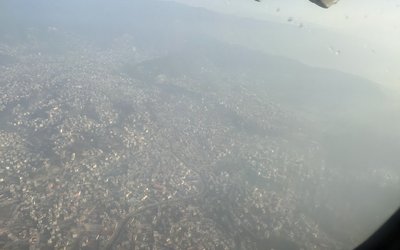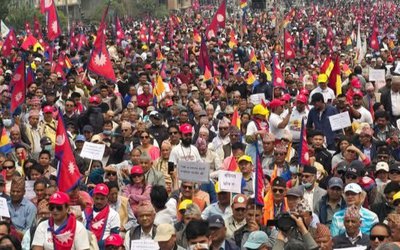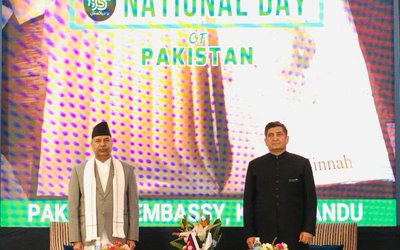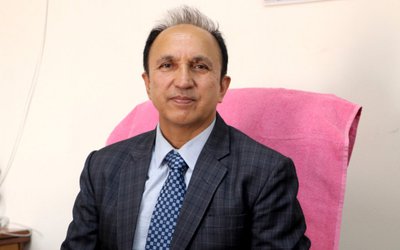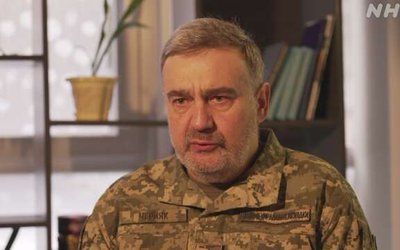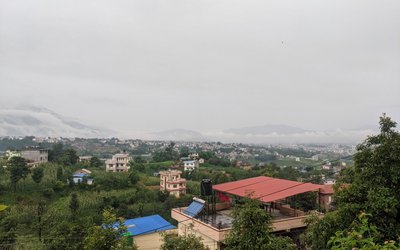
It was my first trip back to the US in almost eight years and post-Covid, to deliver a seminar at New Mexico Water Resources Research Institute (NMWRRI) on how Cultural Theory sees “wicked water problems” under climate change impact, and then to take part in the UN World Water Conference being held in New York by that world body after 47 years. What I saw of the Nepali and Indian diaspora there forced me to ponder anew this old issue as I outline below.
One does meet Nepalis working abroad in the most unexpected of places. Relatives of mine taken on a cruise in the Bahamas by their American relatives were stunned to find the cruise ship had many Nepali cooks, waiters and security staff! Not what one would expect of Himalayan highlanders. Running into Nepalis in dhabas from Gorakhpur to Bangalore is no surprise; but I was amazed to find them in Bangkok’s mega store MBK next to Chulalongkorn University. Even more flabbergasted was I to find out they were Burmese Nepalis from near Mandalay, and their bhinaju (brother-in-law, also from Burma) was a Gyawali! Indeed, the biggest Hindu temple in Yangon across the lake from the famous Shwedagon pagoda is serviced by a Nepali priestly family.
There have been historical migrations of Nepalis seeking better opportunities outside their homeland (which has expanded into modern labour market in many ways over the last few decades). Our highlander ancestors have fought in Punjab Maharaja’s army against the British, and later as British (and Indian) Gurkhas till today even inAfghanistan. And vice versa, others have migrated to Nepal because of wars and invasions in the Ganga plains or problems in Tibetan highlands over the centuries. Now, starting with the last decades of the 20th Century, that pattern has changed dramatically: skilled and unskilled Nepalis are heading to new destinations in the Gulf, Malaysia and South Korea while educated Nepalis make it to Europe, America and Australia in both academia and industry.

It is hard to find ANY Nepali family today, rich or poor, without one maybe even two or more members in the diaspora. According to official report, over 1.1 million labour migration approvals were issued between 2019-2022, and of those coming back, the estimate was most went back after a short stay at home. It resulted in an inflow of 7.5 billion US$ in 2022, far outstripping foreign aid and any other traditional inflows. Indeed, the World Bank estimates that personal remittances accounted for 27.6% of Nepal’s GDP in 2015, declining to 22.7% only in Covid-plagued 2021. A classic case of highly unstable ‘Dutch Disease Impact’ economy, if any, that has promoted a highly corrupt rent-seeking political regime!
The changing nature of that migration in modern times was first demonstrated to me at the 2006 March World Water Forum in Mexico City. Given the ongoing “regime change” political upheaval in Nepal at the time, official Nepal was totally absent without a formal government delegation. Informal Nepal was, however, quite dominant: many Nepalis working in universities and INGOs abroad received all kinds of international water awards there, many such were active participants or organizers of various panels; and I myself was there as chair of an EU reviewpanel of its water research funding that had late Prof. Tony Allan as rapporteur and some ten other professors from around the world as members. Individual professional excellence of Nepalis contrasted with collective incompetence of the Nepali state!
This was brought home even more dramatically in New Mexico’s Las Cruces, where in addition to NMWRRI interactions, I had the honour to deliver a keynote address to the 14th Nepali Students Association International Conference organized by Nepali Students Association (NeSA) of New Mexico State University. It was a large gathering of high professional standard, both in-person and virtually, of skilled Nepalis in a wide range of disciplines. It was truly amazing to see Nepalis mostly in their 20s to 40s not only enrolled as PhD students doing research (not so much on Nepal but on problems of their adopted home base) as well as working across the globe as cutting-edge professionals (associate professors, senior researchers, corporate experts etc.) collaborating with Euro-American, Chinese, and South-East Asian colleagues.
Contrast this with what happens at Nepal’s academic forums. Its premier university remains in lock-up (talabandi) nine months of the year; student unions are but gangs of street thugs affiliated to political parties; teachers prefer to kowtow before politicians for perks rather than opt for academic excellence; and students are less known for academic achievements and more for beating up teachers. Is it any wonder that young students (and their parents) opt to go abroad for education instead of enrolling in Nepali colleges? Indeed, this year a record number of young Nepalis received the much-coveted “no objection certificate” to go abroad for higher studies, draining a remittance-dependent economy even further of any national development possibility!
At the (erstwhile Royal) Nepal Academy of Science and Technology, former vice-chancellor Jib Raj Pokhrel initiated a “Scientists, return to Nepal” program. It was an abysmal failure for reasons less to do with science and technology or noble elevated emotions and more with Nepal’s dismal economic absorptive capacity. There was no way, within current government rules and regulations, for scientists of the kind I met in New Mexico’s conference to find scope for their skills in today’s rent-seeking Loktantrick Nepal in normal circumstances. That program was revamped by the last VC Sunil Babu Shrestha as “brain pooling”, allowing for more flexible working environment but NAST itself is currently, as with the country’s Supreme Court, headless!
Given that experience, I argued for the following before the New Mexico Nepali crowd. Some of you may return, mostly because of a sense of family obligation; and if you do, you would have to completely re-think what your discipline is, how it can be modified and adapted to Nepali conditions to make it useful to yourselves and the country. It is psychologically not very easy to so re-vamp yourself, but if you do, the possibilities of what someone with your knowledge and experience can do in Nepal is endless. Many of us from the 1970s to 1990s who returned to Nepal and are working in different fields from engineering and medicine to education and public service are living proof that it can be done; but it is not for the faint-hearted, nor is it a rose-strewn path.
The alternative I argued for is to give no more than 5 to 10% of your time to professional projects and activities in your janmabhoomi Nepal, retaining your excellent (and highly specific) work you are doing in your adopted karmabhoomi. You could design your research/action research, commercial or voluntary social service with similar bodies in Nepal of your choice, raise funding in your karmabhoomi (with minimal financial but maximal personnel and in-kind contribution in Nepal) and work with old (and especially younger) Nepali colleagues. The primary benefits are the following: you get to apply and transfer your skills to Nepal and mentor its upcoming younger generation; you continue to be a high quality Nepali asset abroad (which would be a loss for the country if you gave up everything there, came back and could not find anything appropriate in Nepal); and you not only build a bridge across continents but also assure yourselves an “insurance” toe-hold in Nepal in case you have to return home for whatever reason, which would not entail starting from scratch.
The highly professional and successful Indian community I saw in New York and New Jersey, thanks to India’s Waterman Rajendra Singh and his outfit that hosted me there during the UN World Water Conference in March is testimony to that mixed path of diaspora linking together (even while remaining very successful in their adopted karmabhoomi) and helping the mother country. One of many examples would suffice to understand its limitless possibilities. Gandhian Society (based in New Jersey) and Save Indian Farmers (based in Arkansas) have banded together to get the Indian diaspora to help farmers in their home villages, which cannot be done without assuring them better local water management. It has provided both social and technical help, and given the Indian diaspora members a sense of purpose and meaning, and developed powerful social capital. Nepalis abroad could well emulate such examples.
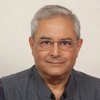
Dipak Gyawali
Gyawali is Pragya (Academician) of the Nepal Academy of Science and Technology (NAST) and former minister of water resources.
- Re-Thinking Democracy: Why South Asians Are worried
- Mar 17, 2025
- Nepal’s Governance Mired In Endemic Corruption
- Feb 20, 2025
- What Might The Age Of Trump Look Like?
- Jan 22, 2025
- Kathmandu Dialogue With Dugin
- Dec 25, 2024
- Bioregionalism Satsang
- Sep 27, 2024
